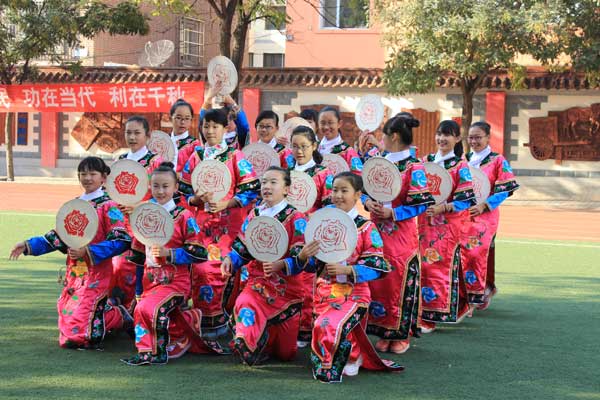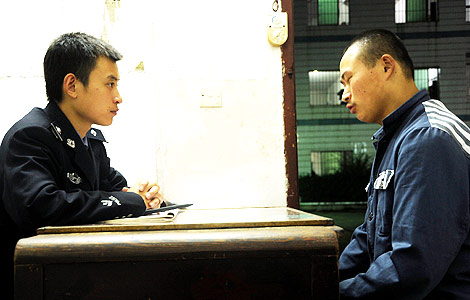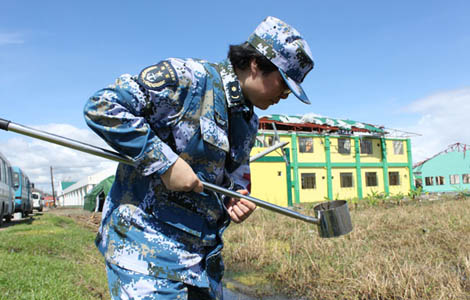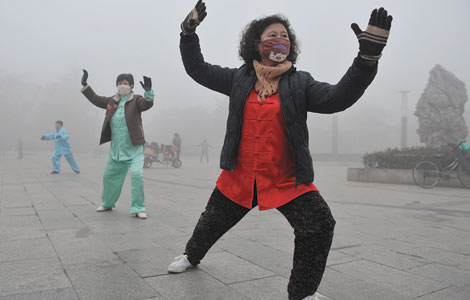An entity of identity
Updated: 2013-12-12 10:28
By Wang Kaihao (China Daily)
|
||||||||
 |
|
Students at the Manchu Elementary School in Hohhot wear traditional Manchu attire and perform taipinggu, a dance with hand-held drums. Photos by Wang Kaihao / China Daily |
A group of ethnic Manchu people in Hohhot is doing all they can to preserve the culture. They share their efforts, hopes and dreams with Wang Kaihao.
Since recently retiring from a construction company in Hohhot, capital of the Inner Mongolia autonomous region, Song Aihe finally has some free time to care for the flowers and vegetables in his modest yard.
When he trims the withering vines this winter, a pole that resembles a streetlamp, gradually becomes apparent in one corner.
"That is our sacred pole," says the 60-year-old, who is from the Manchu ethnic group. "You will probably not find another in Hohhot now, though it was essential for every Manchu family in the past."
The pole represents respect for crows. According to legend, Nurhaci, the 17th century's Manchu leader and the predecessor of emperors in the Qing Dynasty (1644-1911), was once saved by crows as he escaped from advancing enemies.
Song's home is in Xincheng (literally meaning "new town") district, located in the northern part of the city's downtown area.
The "new town" was formed in 1739, when more than 3,000 Manchu soldiers were ordered by the emperor to build a military base. It was commonly called "new town", distinguishing it from the older part of Hohhot in the south, where Mongolians were the majority.

 Post-baby Duchess
Post-baby Duchess
 Victoria Beckham S/S 2014 presented during NYFW
Victoria Beckham S/S 2014 presented during NYFW
 'Despicable' minions upset Depp's 'Lone Ranger' at box office
'Despicable' minions upset Depp's 'Lone Ranger' at box office
 'Taken 2' grabs movie box office crown
'Taken 2' grabs movie box office crown
 Rihanna's 'Diamonds' tops UK pop chart
Rihanna's 'Diamonds' tops UK pop chart
 Fans get look at vintage Rolling Stones
Fans get look at vintage Rolling Stones
 Celebrities attend Power of Women event
Celebrities attend Power of Women event
 Ang Lee breaks 'every rule' to make unlikely new Life of Pi film
Ang Lee breaks 'every rule' to make unlikely new Life of Pi film
Most Viewed
Editor's Picks

|

|

|

|

|

|
Today's Top News
China safeguarded national interests in 2013
14 terrorists killed in Xinjiang
 Chinese law firm expands in US
Chinese law firm expands in US
Complacency hinders US energy-saving strategies
China plans its Chang'e-5 lunar probe
Dialogue urged after naval incident
Chang'e-3 mission 'complete success'
Cave art's wide influence explored
US Weekly

|

|








